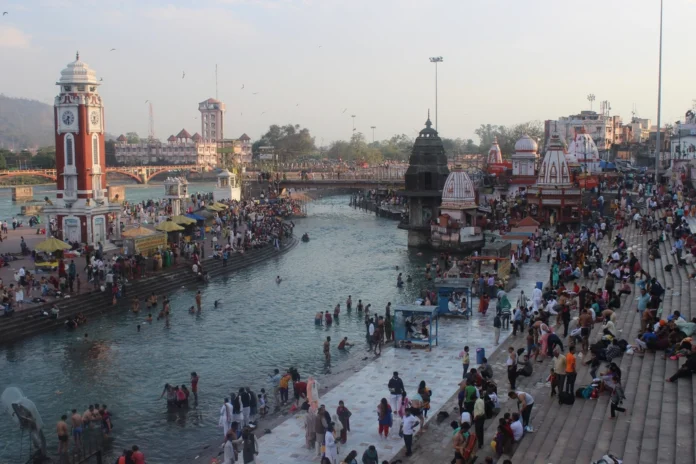India’s health insurance system includes government-backed public schemes for the economically vulnerable and a growing private sector offering broad plans. Both are crucial for healthcare access but differ in eligibility, coverage, and services.
Eligibility and Target Audience
India’s public health insurance mainly supports low-income groups, government workers, and organized sector employees. Ayushman Bharat PM-JAY provides up to ₹5 lakh yearly for low-income families’ medical care. ESIS aids factory workers with low wages. CGHS benefits government staff and retirees. States have their own specific schemes.
Private health insurers like Star Health, Max Bupa, and ICICI Lombard offer plans for everyone, regardless of income. They provide individual and family policies with different coverage levels, attracting middle- and upper-class consumers who want personalized and comprehensive healthcare.
Coverage and Benefits
Public schemes emphasize broad, basic coverage focused on hospitalization and essential medical needs, often with a defined maximum limit per family per year. For example, PM-JAY provides cashless treatment in empaneled hospitals, including pre- and post-hospitalization costs, diagnostics, and medicines. However, public schemes sometimes have limited coverage for outpatient care or elective procedures and may restrict access to government or empaneled private hospitals.
Private health insurance plans tend to offer more diverse and customizable coverage, including outpatient treatments, maternity, critical illness, wellness benefits, and alternative medicine (AYUSH) without sub-limits, responding to evolving consumer demands. They also tend to have higher coverage limits, faster claim settlement processes, and more extensive hospital networks—often exceeding 10,000 facilities nationwide.
Funding and Premiums
Public health insurance is largely funded through government budgets and social contributions (in schemes like ESIS). Coverage is typically free or low-cost for beneficiaries, making it accessible to vulnerable populations but sometimes strained by infrastructure and administrative challenges.
Private insurance relies on premiums paid by individuals or employers, with annual costs varying based on age, plan features, and coverage amount. Premiums for individual plans generally range from ₹5,000 to ₹20,000, while family floater plans can go up to ₹50,000 or more annually. Private insurers also offer add-ons like no-claim bonuses and health check-ups to incentivize policyholders.
Similarities
Despite differences, both public and private health insurance schemes share important commonalities:
- Cashless Treatment: Both offer cashless hospitalization in empaneled hospitals, facilitating easier access to care.
- Regulation: The Insurance Regulatory and Development Authority of India (IRDAI) oversees regulations, implementing reforms to enhance coverage fairness, shorten waiting periods, and promote treatments such as AYUSH.
- Goal of Expanding Healthcare Access: Government and private sectors are boosting insurance coverage in India. By 2025, government programs aim to insure almost half the population, while the private insurance market expands.
Challenges and Outlook
Public healthcare schemes struggle with rural infrastructure and hospital capacity, hindering fair access. Private insurance offers flexibility but is costly for low-income groups. Government reforms and public-private partnerships strive to close these gaps, enhance coverage, and ensure inclusive healthcare.
Top 5 Public Health Insurance Schemes in India (2025)
India’s public health insurance targets financial protection and healthcare access for the economically vulnerable, government employees, and organized sector workers. These schemes are largely government-funded and subsidized, providing cashless or reimbursable treatments through a vast network of approved hospitals. Here’s a summary of the top five public health insurance schemes in India, detailing costs, coverage, eligibility, financial aspects, and consumer satisfaction.
1. Ayushman Bharat Pradhan Mantri Jan Arogya Yojana (PM-JAY)(Official website: https://pmjay.gov.in/)
- Cost: Free for eligible families (no premium charged from beneficiaries).
- Available Services/Coverage Features: Offers up to ₹5 lakh per family annually for secondary and tertiary hospital stays. Covers cashless pre-hospitalization, hospitalization, post-hospitalization, diagnostics, and medicines at approved public and private hospitals nationwide.
- Eligibility: Economically vulnerable families identified through socio-economic criteria (approximately 50 crore beneficiaries).
- Open for: Limited to socio-economically disadvantaged families identified in the National Database of Eligible Families.
- Core Financial Features: Fully funded by the government, no direct premium cost to beneficiaries, cashless claims.
- Consumer Satisfaction Score: High, with estimates around 75-80% satisfaction due to broad coverage and financial protection; some issues remain with awareness and hospital access in remote areas.
2. Central Government Health Scheme (CGHS)(Official website: https://cghs.gov.in/)
- Cost: Nominal premium contribution from central government employees; largely subsidized.
- Available Services/Coverage Features: Government and selected private hospitals offer extensive outpatient and inpatient care, specialist consultations, diagnostics, medications, and hospitalization.
- Eligibility: Central government employees, pensioners, and their dependents.
- Open for: Limited to central government employees and pensioners.
- Core Financial Features: Funded through government budget and employee contributions; offers cashless and reimbursement options.
- Consumer Satisfaction Score: Generally positive (~70-75%) for urban government employees with easy access to facilities; limited reach in rural or non-employee populations.
3. Employees’ State Insurance Scheme (ESIS)(Official website: https://www.esic.nic.in/)
- Cost: Funded by combined employer and employee contributions (currently around 1.75% from employers and 0.75% from employees of wages).
- Available Services/Coverage Features: Insured workers and their families receive full medical care, covering outpatient, inpatient, maternity, disability, and rehabilitation services.
- Eligibility: Employees earning below a wage threshold (currently ₹21,000 per month) working in factories and establishments covered by the scheme.
- Open for: Limited to eligible employees in organized sector factories and establishments.
- Core Financial Features: Social insurance model with payroll contributions; cashless services through ESI hospitals.
- Consumer Satisfaction Score: Moderate (~65-70%), with strengths in urban industrial areas; challenges include infrastructure and quality variations.
4. Rashtriya Swasthya Bima Yojana (RSBY) — Mostly Integrated into PM-JAY(Official website: (Integrated under PM-JAY) https://pmjay.gov.in/)
- Cost: Free for Below Poverty Line (BPL) families; subsidized by the government.
- Available Services/Coverage Features: Provided hospitalization coverage up to ₹30,000 per year via a smart card-based cashless system.
- Eligibility: BPL families.
- Open for: Limited to Below Poverty Line households.
- Core Financial Features: Government-funded, no premium charged to beneficiaries.
- Consumer Satisfaction Score: Historically moderate (~60-65%); largely phased out and merged with PM-JAY for better coverage and benefits.
5. State-Specific Health Insurance Schemes
- Cost: Varies by state; often free or subsidized for eligible populations.
- Available Services/Coverage Features:Hospitalization, specialized care, and outpatient benefits are designed to meet local health needs. Examples include Mahatma Jyotiba Phule Jan Arogya Yojana in Maharashtra, Rajiv Aarogyasri in Telangana, and Biju Swasthya Kalyan Yojana in Odisha.
- Eligibility: Low-income families within the respective states, with socio-economic criteria.
- Open for: Limited to residents meeting state-specific eligibility.
- Core Financial Features: State government-funded; cashless hospitalization at empaneled hospitals.
- Consumer Satisfaction Score: Varies widely by state; typically 60-75%, depending on administrative efficiency and hospital network quality.
Top 5 Private Health Insurance Providers in India (2025)
India’s private health insurance sector is booming, offering comprehensive and flexible coverage beyond public schemes. Private insurers deliver diverse products with various benefits, faster claim settlements, and broad hospital networks. Here’s a concise look at the top five private health insurers in India, highlighting their costs, coverage features, accessibility, financial traits, and customer satisfaction.
1. Star Health and Allied Insurance(Official website: https://www.starhealth.in/)
- Cost: Premiums generally range from ₹5,000 to ₹30,000 annually depending on plan type and coverage.
- Available Services/Coverage Features: Provides tailored plans such as critical illness, senior citizen health plans, family floater options, and coverage for hospitalization, pre- and post-hospitalization expenses, day-care procedures, and home treatments.
- Open for: Open to all individuals, families, and corporate groups across India.
- Core Financial Features: Features include no-claim bonus (up to 50%), cashless claim facilities at 10,000+ hospitals, and lifelong renewability.
- Consumer Satisfaction Score: High satisfaction with claims settlement and customer service, rated around 80-85%.
2. Max Bupa Health Insurance (Now Niva Bupa)(Official website: https://www.nivabupa.com/)
- Cost: Annual premiums typically range between ₹7,000 to ₹25,000 for individual plans; family floaters cost more.
- Available Services/Coverage Features: Includes inpatient and outpatient care, alternative therapies, maternity benefits, wellness programs, and health check-ups. Provides extensive hospitalization coverage, including pre- and post-hospitalization.
- Open for: Available to all individuals and families; no income restriction.
- Core Financial Features: Cashless claim access across a pan-India hospital network, no-claim bonus, and optional add-ons like critical illness cover.
- Consumer Satisfaction Score: Among the top in customer satisfaction, scoring approximately 85%, praised for transparency and claim settlement.
3. ICICI Lombard General Insurance(Official website: https://www.icicilombard.com/)
- Cost: Premiums vary widely, from ₹6,000 to ₹30,000 or more depending on plan and age.
- Available Services/Coverage Features: Comprehensive health plans cover critical illness, day-care procedures, maternity, and outpatient benefits. Digital claim processing and teleconsultation services are offered.
- Open for: Open to all residents across India with flexible plans for individuals and families.
- Core Financial Features: Strong claim settlement ratio (~90%), cashless services, and wellness benefits.
- Consumer Satisfaction Score: High (~80%), with positive reviews on claim turnaround time and customer support.
4. HDFC ERGO Health Insurance(Official website: https://www.hdfcergo.com/)
- Cost: Annual premiums range between ₹5,000 and ₹35,000 based on plan features and age.
- Available Services/Coverage Features: Covers hospital stays, childbirth, traditional medicine, short-term treatments, and health perks like check-ups and online consultations.
- Open for: Available nationwide for individuals, families, and corporate groups.
- Core Financial Features: Offers cashless claims at over 9,500 hospitals, no-claim bonuses, lifelong renewability, and wellness incentives.
- Consumer Satisfaction Score: Strong customer ratings (~78-82%) especially for ease of claim processing and plan flexibility.
5. Religare Health Insurance (Care Health Insurance)(Official website: https://www.careinsurance.com/)
- Cost: Premiums typically range from ₹6,000 to ₹30,000 depending on age, plan, and coverage.
- Available Services/Coverage Features: Health plans include critical illness, maternity, outpatient services, wellness programs, health check-ups, and a “reload benefit” that reinstates coverage after a claim.
- Open for: Open to all individuals and families across India.
- Core Financial Features: Cashless hospital network, no claim bonus, health check-ups, and digital claims with high claim settlement ratios.
- Consumer Satisfaction Score: Rated around 80%, noted for quick claim settlements and customer-centric services.
READ MORE: Private and public health insurance of Philippines (Make informed choices)


